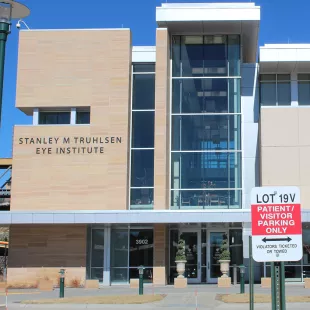What is Amblyopia?
Amblyopia is poor vision in an eye that did not develop normal sight during early childhood. This condition, sometimes referred to as "lazy eye," can run in families.
What Causes Amblyopia?
The main causes of amblyopia are strabismus, refractive errors, or cloudiness of the eye tissues. Strabismus, or misaligned eyes, is the most common. The misaligned eye is ignored by the brain and "turns off."
A refractive error (meaning an eye is nearsighted, farsighted, or has astigmatism) is another cause of amblyopia. If one eye has a very different refractive error from the other eye, or if both eyes have a very strong refractive error, amblyopia can develop in the eye or eyes that are out of focus.
The most severe form of amblyopia occurs when cloudiness of the eye tissues prevents any clear image from being processed. This can happen in conditions such as infantile or developmental cataracts.
How is Amblyopia Detected?
Amblyopia is detected by finding a difference in vision between the two eyes or poor vision in both eyes. The ophthalmologist will also carefully examine the eyes to see if other eye conditions are causing decreased vision.
How is Amblyopia Treated?
Amblyopia is treated by forcing the brain to use the affected eye or eyes. If refractive errors are present, they are corrected with eyeglasses or, less commonly, with contact lenses or refractive surgery. If a cataract or other cloudiness is present, surgery may be necessary to clear the line of sight. Strabismus may require surgery before, during, or after the amblyopia treatment.
Patching or blurring the sound eye is then used to improve the vision by forcing the brain to recognize and process information from the affected eye or eyes. Once maximum vision has been obtained, treatment often needs to be continued at least part time for months to years to maintain the recovered vision. The earlier the treatment begins, the more successful it will be.
When Is the Best Time to Correct Amblyopia?
The best time to correct Amblyopia is during infancy or early childhood, because after the first nine years of life, the visual system is normally fully developed. It is recommended that children have their eyes and vision monitored by their primary care physician at their well-child visits. If there is a family history of amblyopia, children should be screened by an ophthalmologist (Eye M.D.).
Our Locations
-

-

Truhlsen Eye Institute at Village Pointe Health Center
110 N 175th St.
Get Directions
Omaha, NE 68118